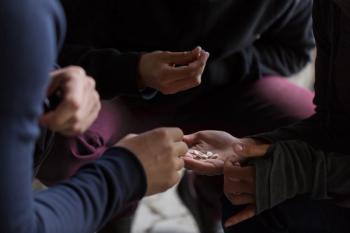
FDA approves expanded use of vosoritide injection for children under age 5 with achondroplasia
In a phase 2 clinical trial, the safety and efficacy of vosoritide was similar in children aged younger than 5 years to those older than 5 years.
The FDA has approved an expanded use of vosoritide (VOXZOGO; BioMarin Pharmaceutical Inc.) for injection to treat children with achondroplasia, the most common form of disproportionate short stature, that are younger than 5 years of age according to BioMarin Pharmaceutical.1
Vosoritide is also approved to increase linear growth in patients aged 5 years and older with achondroplasia with open epiphyses (growth plates).2,3 Acceptance of the supplemental New Drug Application (sNDA) for the expanded indication of vosoritide was issued by the FDA in March, 2023.
This acceptance was supported by a randomized, double-blind, placebo-controlled phase 2 clinical trial, which demonstrated a similar safety and efficacy profile in children younger than 5 years compared to individuals older than 5 years, according to BioMarin.2
The phase 2 study demonstrated an improvement in height Z-score (height adjusted measurement for age and sex in reference to average stature population and reported as Standard Deviation, SD), for vosoritide compared to placebo at 52 weeks.
Vosoritide increased height Z-score by 0.30 SD (95% CI, 0.07, 0.54) and increased annualized growth velocity by 0.92 cm per year (95% CI, 0.24, 1.59) compared to placebo. Upper-to-lower body segment ratio was not significantly impacted by vosoritide. Upper-to-lower body segment ratio was changed by –0.06 (95% CI, –0.15, 0.03) over the 52-week period.4
A C-type natriuretic peptide (CNP) analog, vosoritide acts as a positive regulator of the signaling pathway downstream of fibroblast growth factor receptor 3 gene (FGFR3), promoting endochondral bone growth.
This bone growth, a process essential to bone tissue creation, is negatively regulated in patients with achondroplasia because of a gain of function mutation in FGFR3.2
Achondroplasia is the most common form of skeletal dysplasia leading to disproportionate short stature. Characterized by the slowing of endochondral ossification, which results in disproportionate short stature and disordered architecture in the long bones, spine, base of the skull, and face.
Over 80% of children with achondroplasia have parents of average stature, and because of a spontaneous change in the gene, have the condition.2
References:
- U.S. Food and Drugc Administration approves BioMarin's VOXZOGO® (vosoritide) for children under 5 years with achondroplasia under 5 Years with achondroplasia. News release. Cision PR Newsire. October 20, 2023.
https://www.prnewswire.com/news-releases/us-food-and-drug-administration-approves-biomarins-voxzogo-vosoritide-for-children-under-5-years-with-achondroplasia-301963505.html - FDA accepts BioMarin’s supplemental New Drug Application to Expand Use of VOXZOGO (vosoritide) for injection to treat children with achondroplasia under the age of 5. BioMarin Pharmaceutical Inc. Press release. March 7, 2023. Accessed October 19, 2023. https://www.prnewswire.com/news-releases/fda-accepts-biomarins-supplemental-new-drug-application-to-expand-use-of-voxzogo-vosoritide-for-injection-to-treat-children-with-achondroplasia-under-the-age-of-5-301765021.html
- The first and only therapy approved to increase linear growth in children with achondroplasia aged 5 years and over with open growth plates. BioMarin Pharmaceutical Inc. Accessed October 19, 2023. https://www.biomarin.com/our-treatments/products/voxzogo/
- BioMarin announces favorable results from global phase 2 study of VOXZOGO (vosoritide) for injection in infants and young children with achondroplasia at The Endocrine Society Annual Meeting, ENDO 2022 (June 11-14) in Atlanta. BioMarin Pharmaceutical Inc. June 13, 2022. Accessed October 14, 2023. https://investors.biomarin.com/2022-06-13-BioMarin-Announces-Favorable-Results-from-Global-Phase-2-Study-of-VOXZOGO-TM-vosoritide-for-Injection-in-Infants-and-Young-Children-with-Achondroplasia-at-The-Endocrine-Society-Annual-Meeting,-ENDO-2022-June-11-14-,-in-Atlanta
Newsletter
Access practical, evidence-based guidance to support better care for our youngest patients. Join our email list for the latest clinical updates.







